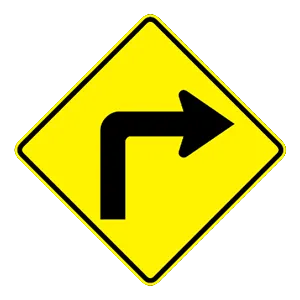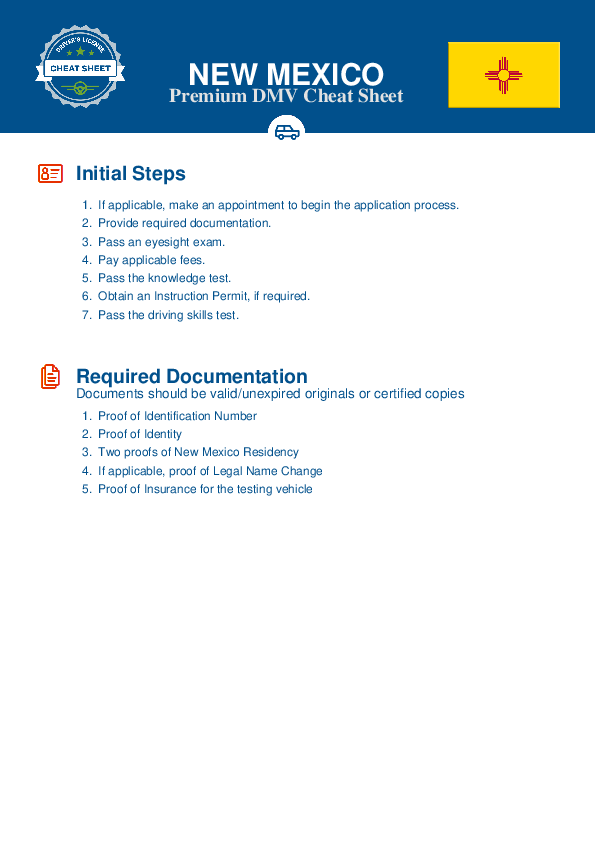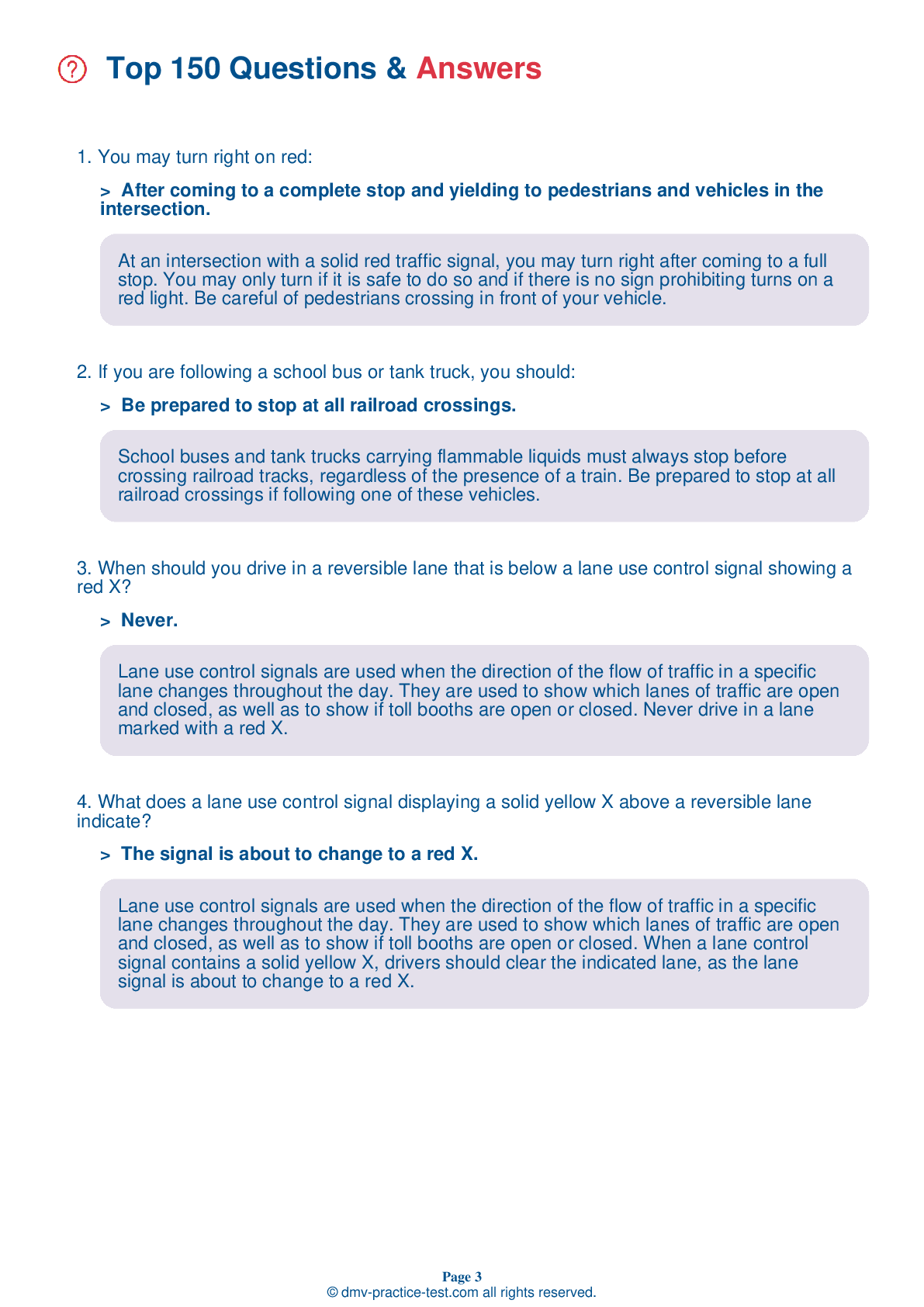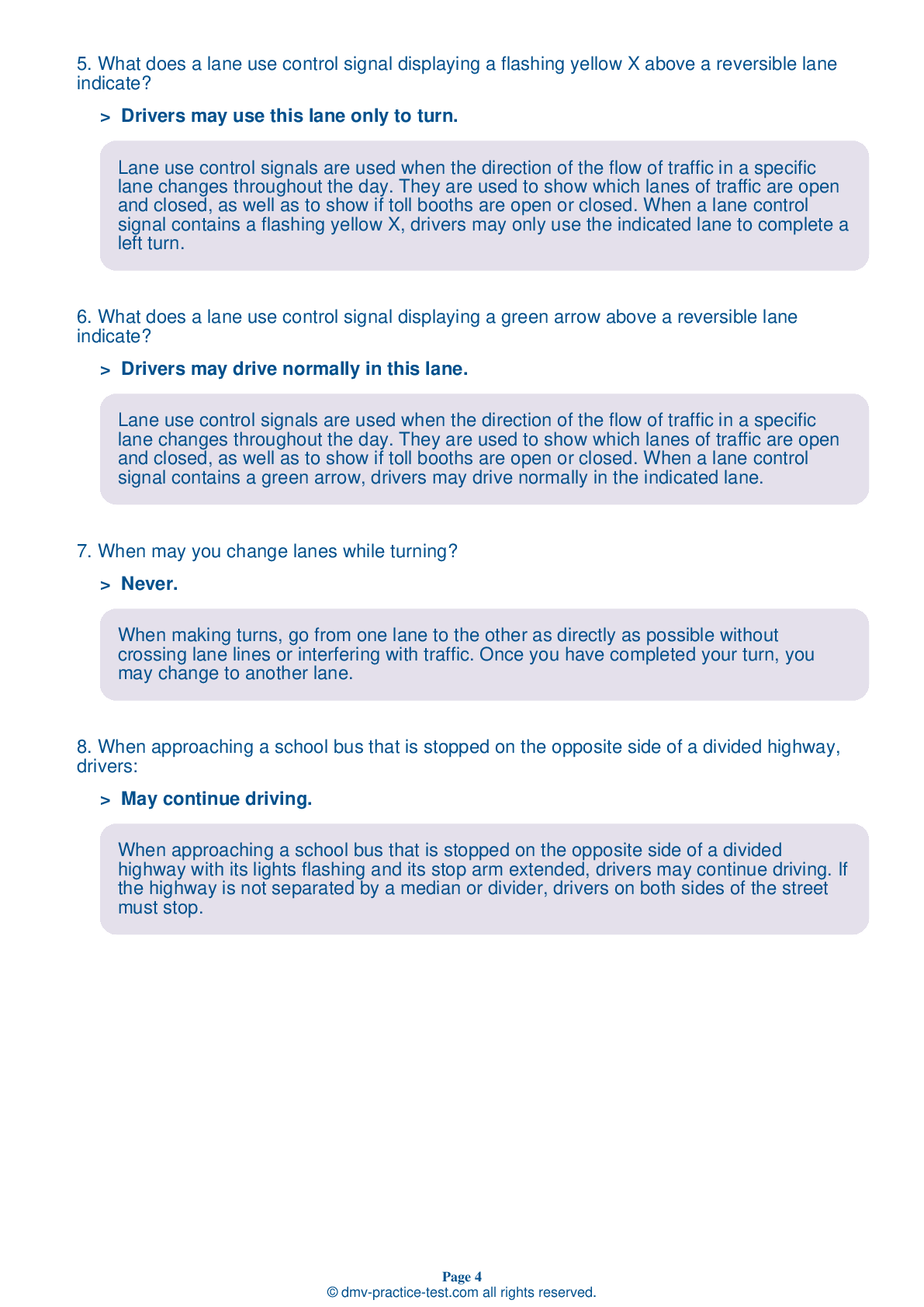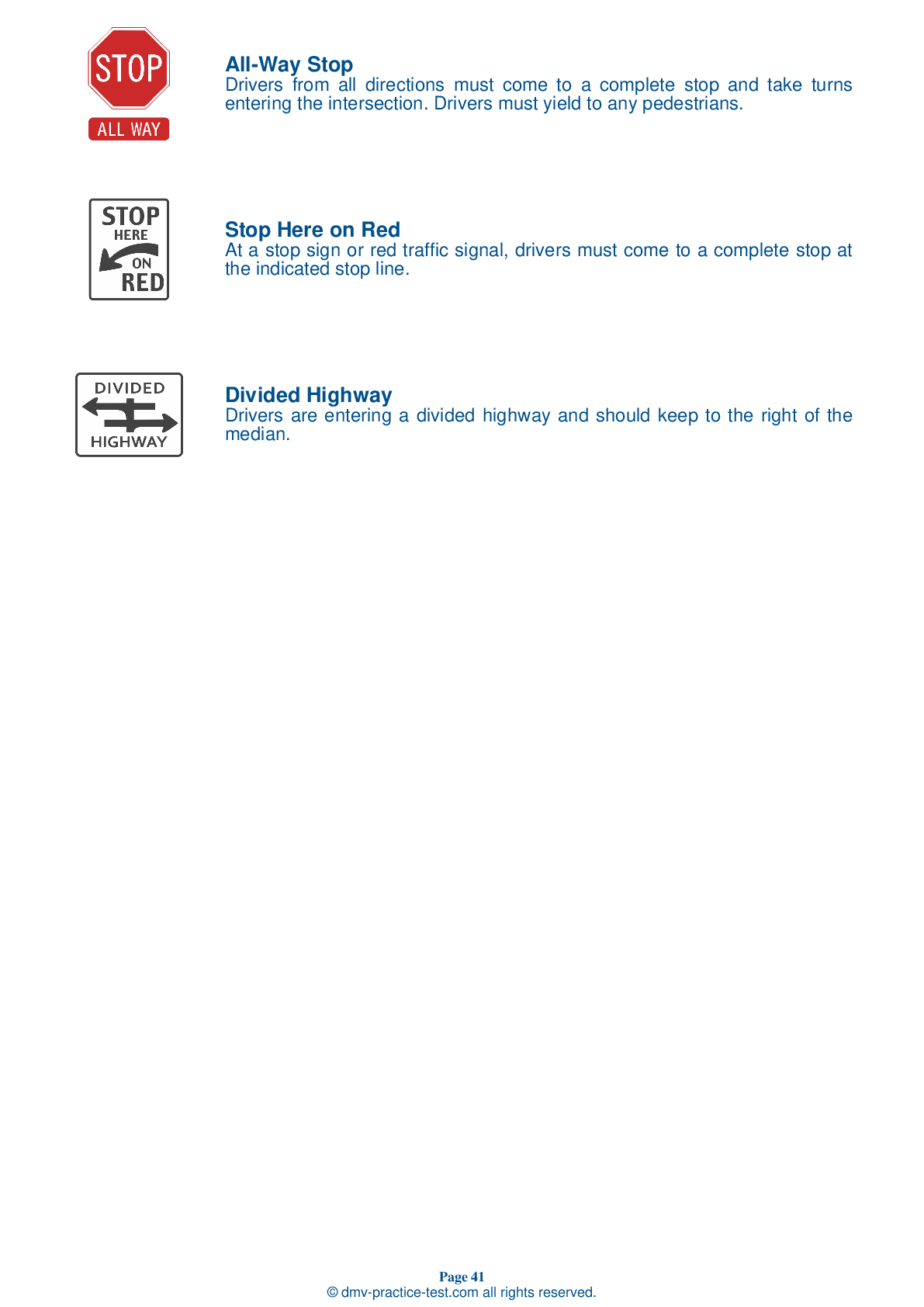FREE New Mexico DMV Practice Test #5 Page 2 of 3
The DMV practise exams in New Mexico have been updated for January 2025. It includes questions based on the most important traffic signals and laws for 2025 from the New Mexico Driver Handbook. To study for the DMV driving permit test and driver's licence exam, use actual questions that are very similar (often identical!) to the DMV driving permit test and driver's licence exam.
Each question on the practise exam has a tip and explanation to help you recall the ideas. Questions about traffic rules, traffic signs, and driving statutes, as well as knowledge from the Driver Handbook, will be included in the written portion of the official New Mexico DMV test.
You must properly answer 18 of the 25 questions to receive a passing mark. To help you prepare for your instruction permit or driver's licence, take this practise test from the New Mexico Department of Motor Vehicles.
The DMV exam is offered in a variety of languages.
Using any form of testing help will result in an automatic fail, and the DMV may take further action against your driver's licence, so avoid it.
9 . When double solid yellow lines separate lanes of traffic:
Yellow lines separating lanes of traffic indicate that traffic is moving in opposite directions. Double solid lines indicate that passing is not permitted from either direction.
10 . You are driving on the freeway behind a large truck. You should drive:
It is necessary to follow farther behind a large truck than you would if following a passenger vehicle because trucks have larger blind spots.
11 . What does a lane use control signal displaying a solid yellow X above a reversible lane indicate?
Lane use control signals are used when the direction of the flow of traffic in a specific lane changes throughout the day. They are used to show which lanes of traffic are open and closed, as well as to show if toll booths are open or closed. When a lane control signal contains a solid yellow X, drivers should clear the indicated lane, as the lane signal is about to change to a red X.
12 . The best way to deal with tailgaters is to:
Check the traffic behind you several times a minute to know if another driver is tailgating, approaching too fast, or trying to pass. If another car is following you too closely, slow down and let it pass. Most rear-end collisions are caused by vehicles following too closely.
13 . This yellow sign means:
